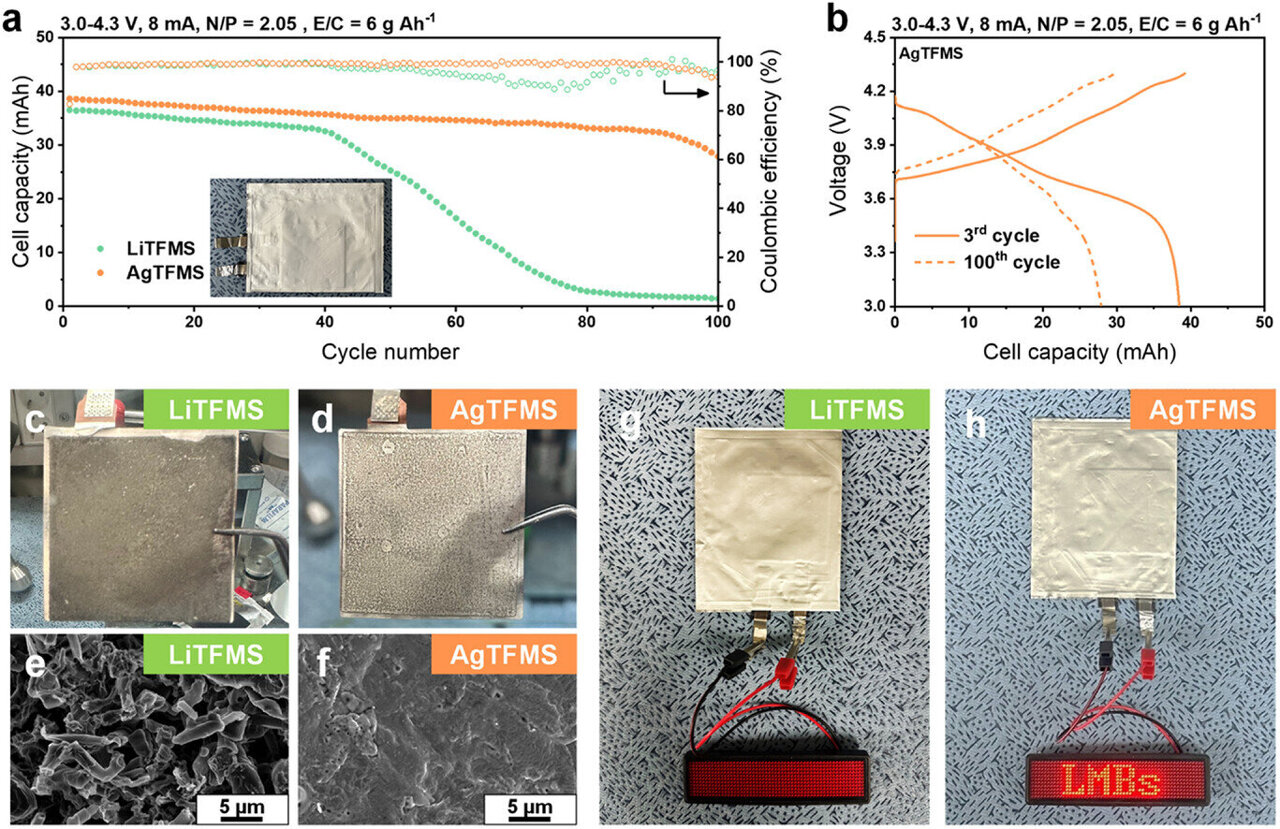
A research group has created a technology that significantly improves the stability of extremely thin metal anodes measuring only 20μm. Under the leadership of Professor Yu Jong-sung from DGIST’s Department of Energy Science and Engineering, the team introduced a novel approach employing electrolyte additives to tackle the lifespan and safety challenges impeding the widespread adoption of lithium metal batteries. This study published in the journal Advanced Energy Materials .
Lithium metal anodes (3,860 mAh g⁻¹) possess more than tenfold the capacity compared to commonly utilized graphite anodes (372 mAh g⁻¹), along with having a lower standard reduction potential, positioning them as strong contenders for future anode designs. Nevertheless, throughout charging and discharging processes, lithium often develops into dendrites, resulting in electrical shorts and overheating problems that affect both longevity and security. Additionally, because of volumetric changes, the solid electrolyte interphase (SEI) continually breaks down and regenerates, accelerating the consumption rate of the electrolyte.

The application of ultra-thin lithium metal, less than 50 micrometers thick, is crucial particularly when it comes to making lithium metal batteries commercially viable. Nonetheless, these challenges intensify as the thickness decreases further. Therefore, researchers from both academic institutions and companies have concentrated their efforts on improving the stability of lithium metal anodes through SEI engineering techniques. Notably, methods involving electrolyte additives for forming this protective layer have been identified as straightforward but highly efficient solutions.
Earlier investigations demonstrated that lithium fluoride (LiF) enhances the durability of lithium (Li) metal anodes because of its robust mechanical properties. Additionally, recent findings indicate that silver (Ag) aids in achieving even lithium deposition via an alloying process with Li. Nevertheless, no study has investigated a singular compound that can generate both Ag and LiF concurrently.
In order to tackle this issue, Professor Yu’s research group incorporated silver trifluoromethanesulfonate (AgCF₃SO₃, also known as AgTFMS) into the electrolyte as an additional component to mitigate dendrite growth and extend the battery’s lifespan. By employing multiple surface analysis techniques, they verified that utilizing an electrolyte with AgTFMS promotes the concurrent creation of both Ag and LiF layers on the lithium metal surface.
As a result, they managed to improve the stability of ultrathin (20μm) lithium metal anodes. Their experiments confirmed that dendrite formation was significantly reduced, extending the battery life over sevenfold when compared with traditional systems. Additionally, Professor Kang Jun-hee’s group from Pusan National University utilized computational chemistry techniques to examine the binding energy between Li and Ag, shedding light on the fundamental mechanisms behind the improved stability.
Professor Yu Jong-sung from DGIST mentioned, "The research was centered around addressing the constraints associated with ultrathin lithium metal and substantially boosting the stability of lithium metal batteries. Through a straightforward method for generating a high-efficiency SEI layer, we've created a technique that boosts both the lifespan and performance of lithium batteries."
We anticipate that this development will speed up the adoption of lithium metal batteries for use as eco-friendly energy storage solutions in multiple sectors such as electric cars, drones, and maritime vessels.
More information: Jong Hun Sung et al., Dynamic Cycling of Ultra-thin Li Metal Anode Through an Electrode-Electolyte Interface Consisting of Lithiophilic Ag and Excessive LiF Under Carbonate-Based Electrolyte Advanced Energy Materials (2025). DOI: 10.1002/aenm.202500279
Provided by Daegu Gyeongbuk Institute of Science and Technology
This tale was initially released on Tech Xplore . Subscribe to our newsletter For the most recent science and technology news updates.